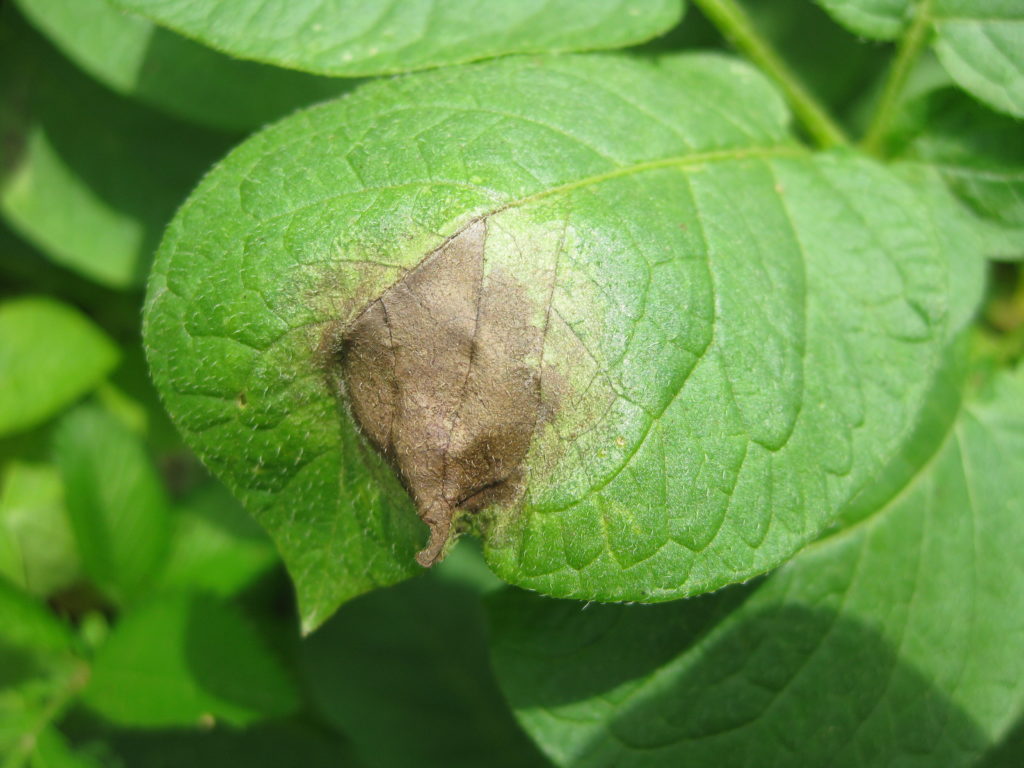BIOLOGICAL CONTROL (from Forbes & Perez, Late Blight Manual, CIP collection)
Biological Control
Biological control consists of reducing a disease through the interaction of one or more live organisms with the disease-causing pathogen. A wide variety of investigations have reported the antagonistic effect of several microorganisms against P. infestans. Among these microorganisms are: Serratia spp., Streptomyces spp., Pseudomonas spp., Bacillus spp., Trichoderma spp., Fusarium spp., Aspergillus spp., Penicillium spp., Myrothecium spp., etc. However, biological control is not common and reports of successful control are rare.
The use of garlic or onion extracts or infusions, or some vegetable ferments such as barley, wheat, rice, garlic, tara, etc., has also been successful under laboratory and greenhouse conditions, but there is no clear evidence of their efficiency in the field.
Several reports mention that sprinkling liquid compost on potato leaves and stems makes microorganisms present in this liquid compete with Phytophthora infestans for living space on the surface of both organs, making pathogen establishment and further infection difficult. However, success has not yet been proven on commercial fields.
Preventive application of commercial bio-fungicides formulated from Bacillus subtilis, which theoretically hinder pathogen establishment, interrupting its development and induce plant-acquired resistance, is under investigation because results obtained under field conditions are sometimes contradictory and usually show low efficacy.


